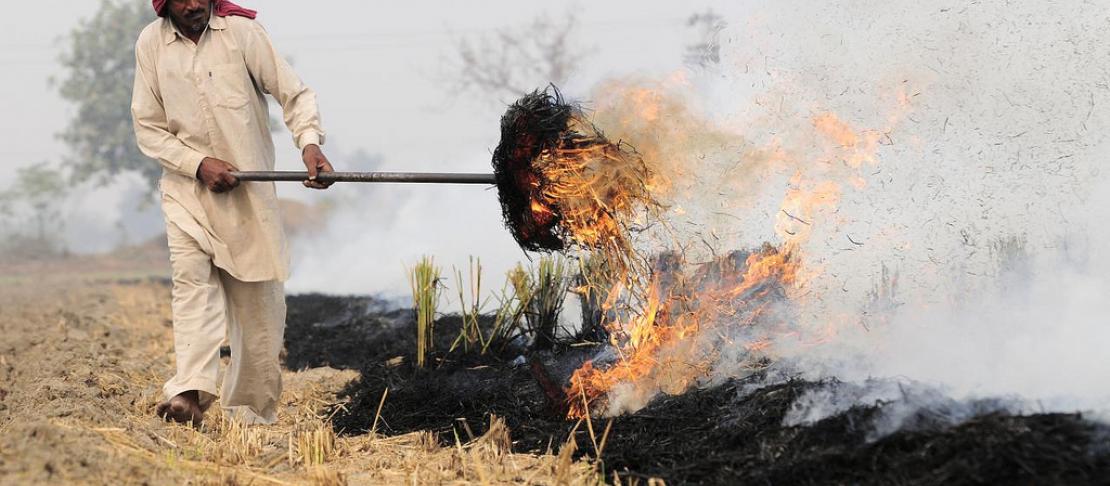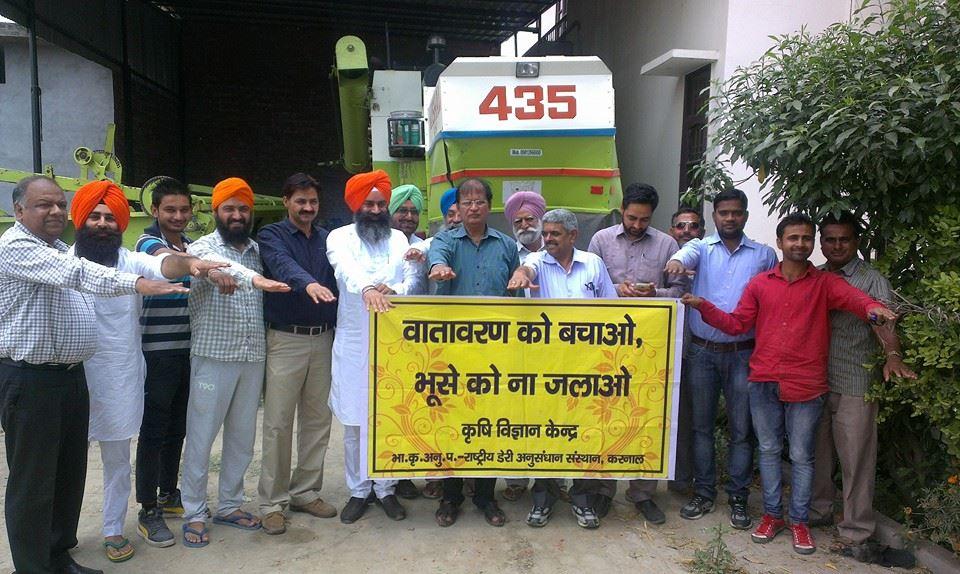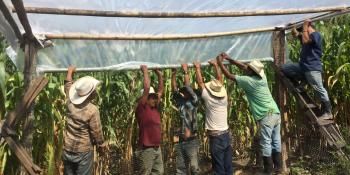Climate-Smart Village in Haryana hosts social awareness campaign against residue burning

Many farmers in India still burn crop residue after a harvest. Not only does this add to greenhouse gas emissions and poor air quality, it also destroys nutrients and organic matter in the soil.
It is estimated that farmers in Haryana and Punjab burn about 30 million tonnes of crop residue a year. Many farmers believe it is necessary to destroy all residue after a harvest to prepare for the next sowing season. Apart from contaminating the air quality and contributing to emissions from farm activity, burning crop residue strips the soil of nutrients and organic matter.
The mass awareness campaign, held on May 1, and titled: Mass Social Learning on Elimination Residue Burning and Promoting Direct Seeded Rice organised by the Indian Council of Agricultural Research (ICAR), the International Maize and Wheat Improvement Center (CIMMYT), the National Initiative for Climate Resilient Agriculture (NICRA) and CCAFS South Asia, was organised to dispel this belief and urge farmers to put an end to the practice. The event also aimed to promote the practice of direct-seeded rice given that the rice growing season is just around the corner. The campaign reached nearly 15,000 farmers.

A farmers group takes an oath in a village in HaryanA, India to stop residue burning. The message says; 'save the environment, stop burning crop residue' Photo: ICAR/Cimmyt
Speaking at the event, Alok K. Sikka, DDG (Natural Resource Management) of ICAR called on farmers to adopt climate-smart agriculture practices. Burning residue goes against all the principles of sustainable agriculture, he said. On the contrary, retaining crop residue has shown to improve soil nutrients and thereby yields.
The Climate-Smart Village project undertaken by CCAFS and CIMMYT in partnership with national partners and farmers organisations is one way for farmers to collectively adopt sustainable agriculture practices and technologies that conserve local resources, increase yields and incomes and manage emisions from farm actvities, he added.
A.K. Singh, DDG (Agriculture Extension) of ICAR, presided over the function and gave an overview of the activities of the mass campaign and the plans to take this forward to reach more farmers every year.
M.L. Jat, Senior Cropping Agronomist of CIMMYT-CCAFS, highlighted joint efforts to scale out the Climate-Smart Village project in the South Asia region.
The Panchayat (local leader) of Beernarayana village, a Climate-Smart Village, vowed that no farmer in the village would burn residue. Members of a farmers group took an oath to stop residue burning in the village.
Harpreet Singh, a farmer from Beernarayana shared his experiences in using climate-smart agriculture practices and technologies .
Many farmers in the village have adopted practices like residue mulching, laser-land levelling, alternate wetting and drying of rice and direct-seeded rice as a way to conserve natural resources and protect the environment while augmenting their yields and incomes.
The event in Beernarayana village marked the end of a two-week long mass awareness campaign that reached thousands of farmers.
Read also:
Social Awareness Campaign Against Residue Burning Concludes
This blog is with inputs from the the Indian Council of Agricultural Research (ICAR) .



